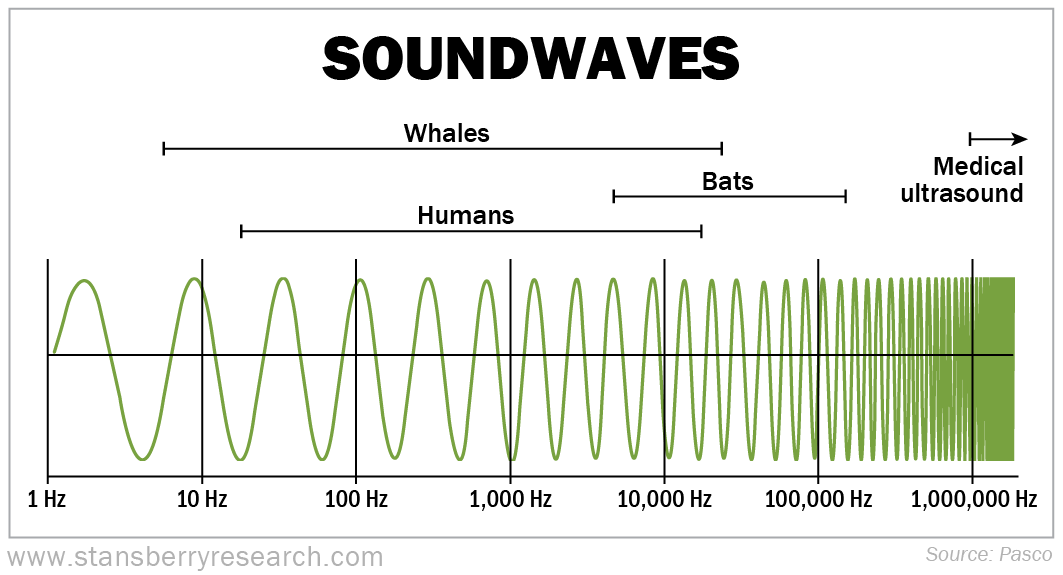Doc's note: Today, we're continuing our series of our favorite issues of the year with a pick from Health & Wealth Bulletin researcher, Misha Cash...
One of my favorite issues this year was "The Military's Music Doctors."
I find the senses to be incredibly fascinating. I love learning more and more about the incredible influences they have on our minds and bodies (and how varied these influences can be from person to person). That is especially true with sounds – which are these tiny vibrations that can change the way that our cells behave... Earlier this year, scientists used sound waves to turn human stem cells into regenerative bone cells!
I think it's important for all of us to consider and evaluate how the sounds that surround us really affect us... Is this sound having a positive or a negative effect on me? Do I need to make a change for the better?

After the fall of Nazi Germany in May 1945, veterans traveled home from faraway places filled with death and fear... Many of them returned convalescing and facing long hospital stays.
To support the healing servicemen, the military hired female musicians to perform for the men. Instrumentalists began stepping away from their lives to become professional, traveling military musicians.
And after the traveling bands hung up their uniforms to return to regular life, many of these musicians used their experiences to become America's first music therapists... forging a new field, which we now call biofield science.
Biofield science is akin to energy medicine, which includes techniques like acupuncture and magnetic therapy.
Energy medicine uses your body's energy field both to obtain useful information and administer healing modalities. And by manipulating sound waves, modern medicine can do some incredible things...
That's why sound and sound therapy make life so phenomenal.
But there's a lot of work that goes into us just hearing sounds...
Sound waves travel into the outer ear – the pinna – and through the ear canal where the sound becomes amplified. Once the sound waves reach the end of your ear canal, your eardrum vibrates.

This vibration moves three tiny bones– the malleus, incus, and stapes – which further amplifies the sound. As the sound now travels through your inner ear, it enters your snail shell-shaped cochlea. This is where the sound waves change in an electrical charge.
More than 25,000 nerve endings receive those chemical charges and transmit the sound information along a communication superhighway to your brain. That's when you're able to recognize what you're hearing.
Some of these sounds vibrate at frequencies that we audibly can't detect but are still affected by, like a dog whistle... There are even practitioners who use inaudible frequencies to heal and calm your body's energy.
Our hearing picks up sound waves between 20 and 20,000 cycles per second or hertz ("Hz"). And it's most sensitive in the frequency range of 2,000 to 5,000 Hz. Anything below 20 Hz or above 20,000 Hz is typically inaudible.

These vibrations influence our minds and mental state.
Sound can calm us when we're stressed. But too much sound – noise pollution – can overwhelm our bodies and emotions. Just 45 minutes without sound is torture.
We experience sound via vibrational frequencies that travel as energy waves through matter (solid, liquid, or gas). Many cultures have used sound as a healing mechanism for thousands of years...
Australian natives use the didgeridoo as a healing tool to help facilitate meditation. Native American tribes also use instruments like drums, rattles, and voices for celebration, prayer, healing, and meditation. And we've shown readers for years how meditation helps calm the mind and even improves your body's ability to heal itself.
Tibetan and Himalayan peoples traditionally create sound baths – using a variety of instruments to "bathe" the listener in sound – as a healing modality as well.
Like the didgeridoo, the sound bath switches on your parasympathetic nervous system, which controls a lot of activities associated with rest and healing. It's our "rest and digest" system that balances our fight-or-flight response.
In the U.S. and other parts of the world, a technique known as "binaural beats" is gaining steam. Research into binaural beats is ongoing, but we have already learned some fascinating things and the technique is already a scientifically accepted treatment for anxiety, stress, sleep, pain, cognition, and memory.
Getting Started
Check out our selection of different types of sound medicine below. There's lots to explore, from binaural beats to sound baths. The links below are clickable, so have a listen...
|
Our Sound-Medicine Jukebox |
|
|---|---|
|
Binaural Beats: |
|
|
Autonomous Sensory Meridian Response ("ASMR") Videos: |
|
|
Chants and Tribal Sounds: |
|
|
Energy Music: |
|
|
Ancient Healing Instruments: |
|
Be sure to try the autonomous sensory meridian response (ASMR) videos. They use sound that stimulates the nervous system and makes some folks tingle.
And of course, do what I do and listen to your favorite music. It's not hard to catch me in the office singing to the Jonas Brothers, Elton John, or Dua Lipa. What do you like listening to? Let us know with an e-mail to feedback@healthandwealthbulletin.com.
Here's to our health, wealth, and a great retirement,
Dr. David Eifrig and the Health & Wealth Bulletin Research Team
November 22, 2022
